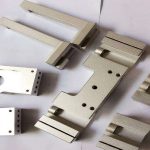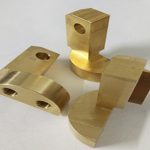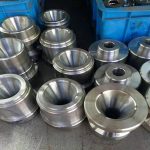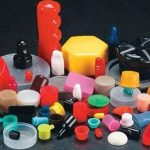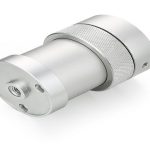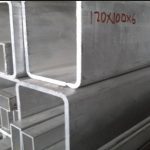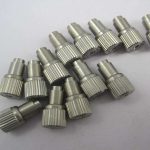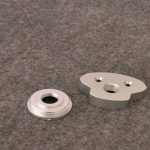The common quality problems of steel are mainly: surface defects, internal defects, and external dimension defects. These three problems will be introduced below:
1. Surface defects
1. Surface cracks:
refers to the linear cracks on the surface of the steel, which should generally be the same as the forging or rolling direction.
Causes of formation: mainly due to the hairline produced during processing (forging, rolling, heat treatment and tempering) due to surface over-burning, decarburization, looseness, deformation, excessive internal stress, and high surface sulfur and phosphorus impurities , Hot cracks and cold cracks.
Inspection method: Surface cracks can be inspected by naked eyes, pickling, magnetic particle inspection, color inspection and gold equivalent methods. When confirming cracks, you must pay attention to distinguish the cracks that appear on the surface of the steel by being brittle and loose, while the steel itself has no cracks.
2. Heavy leather and folding:
the tongue-like or scaly metal flakes bonded on the surface of the steel, which overlap on some parts of the surface, have obvious folding lines.
Causes of formation: due to flashes, burrs, depressions, inclusions, subcutaneous pores and surface looseness on the billet during hot working, the metal rheology during thermal deformation, and the opening forms heavy skins and folds on the surface.
3. Ears:
refers to the concavities on the surface of the steel that extend along the rolling direction.
Cause: The gap of the rolling mill pass is too large, causing the surface of the steel to form bulges along the pores.
4. Scratch:
Also called scratch, it refers to the straight or arc-shaped groove mark on the surface of the steel under the action of external force (visible to the bottom of the groove).
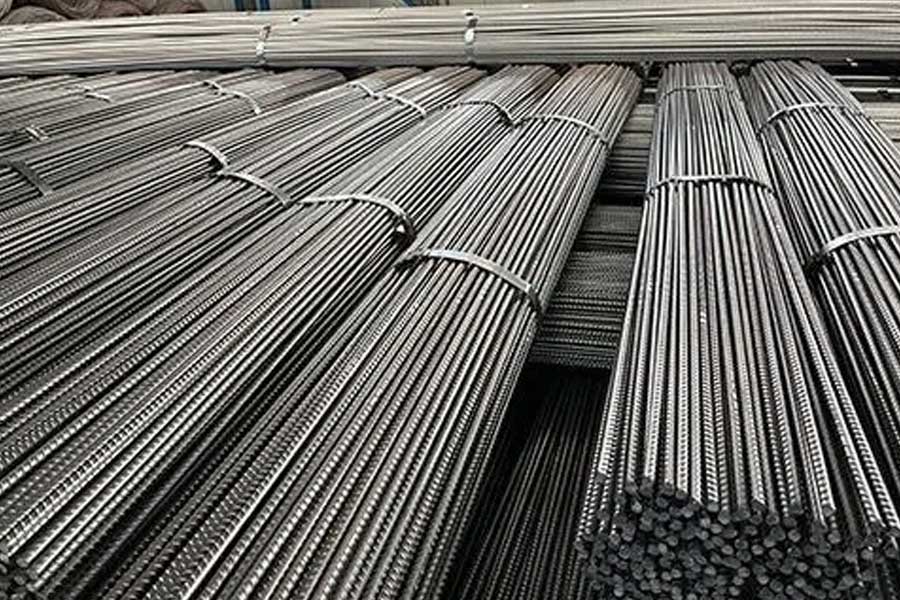
2. Internal defects
1. Segregation:
In fact, it is a general term for the phenomenon of uneven chemical composition in steel. On the acid leaching sample, when the segregation is erodible substances or gas inclusions, it is dark in color, irregular in shape, slightly concave, flat at the bottom, and there are many dense microporous spots. If the anti-corrosion elements are gathered, It is pale in color, irregular in shape, and relatively smooth dimpled spots.
According to the location and shape of segregation, they are usually classified into the following categories: ① Central segregation: appearing in the central part and showing irregularly shaped dark spots. ② Ingot segregation: dark spots concentrated on a closed belt with different widths and different widths and with the cross-sectional shape of the original steel ingot (usually square), so ingot segregation is also called box segregation. ③Punctate segregation: The spots are generally larger, with darker, slightly sunken patterns, oval or melon seeds. Generally distributed, called general point segregation: Distributed on the edge of the steel, called edge point segregation.
Cause of formation: Segregation is the accumulation of certain elements due to selective crystallization and diffusion during the casting and solidification of the steel ingot. Segregation is unavoidable under normal production conditions.
2. Porosity:
The pores inside the steel. The pores generally appear as irregular polygons on low-magnification samples, and the sharp and narrow pits at the bottom usually appear in the segregation spots. In severe cases, there is a tendency to connect into a spongy shape. According to their loose distribution, they can be divided into two categories: center loose and general loose: ①Center loose: there are concentrated voids and dark dots in the center of the low-power sample. There is a slight interlayer on the longitudinal fracture, and the increase of pearlite in the loose center can be seen under the microscope, indicating that the carbon content in the loose center is increased. ②Generally loose: The structure is dense on the low magnification sample, showing scattered small pores and small black spots. The pores are mostly irregular polygons or patterns, distributed on the entire cross-section except for the edges. Center porosity generally appears in the head and middle of the steel ingot, and the difference from general porosity is that it is distributed in the steel section and the center instead of the entire section. Generally, the higher the carbon content, the more serious the center porosity is.
Reasons for formation: During the solidification of the steel ingot, the intergranular low-melting material finally solidifies and shrinks and emits gas to create voids, and the welded pipe is not equipped during the hot working process.
In steel, slight segregation and higher porosity are allowed.
3. Inclusions:
Inclusions are divided into metallic inclusions and non-metallic inclusions. ①Metal inclusions: Mainly defects caused by metal bars, sheets, blocks falling into the steel ingot mold by mistake or ferroalloy blocks added at the end of smelting during the casting process. The edges are clear on low-magnification samples. Geometric shapes with colors that are significantly different from the surroundings. ②Non-metallic inclusions: during the pouring process, there is no time to float out of the slag or the refractory material on the furnace lining and the inner wall of the pouring system that peeled off into the molten steel. The larger non-metallic inclusions are easy to identify, while the smaller ones corrode. After peeling off, leaving small round holes.
4. Shrinkage cavities:
On low magnification samples, the shrinkage cavities are located in the center, and the surrounding areas are often segregated, mixed or loose and dense. Sometimes, caves or crevices can be seen before corrosion. After corrosion, the cavities are partially darkened, showing irregular folds.
Cause of formation: When the steel ingot is poured, the final solidified part (the core part) of the molten steel cannot be filled after solidification and shrinkage. The macroscopic cavities left behind are not filled, and the shrinkage cavity is mainly formed in the head of the steel ingot (the end of the cap).
5. Air bubbles:
On low-magnification samples, there are cracks roughly perpendicular to the surface. There is a slight oxidation and decarburization nearby. The subcutaneous air bubbles are called subcutaneous air bubbles, and the deeper subcutaneous air bubbles are called pinholes.
Causes of formation: defects caused by the gas generated and released during the casting of the steel ingot.
6. Cracks:
At low magnification, the axial position is cracked along the intercrystals, forming a spider web, and in severe cases, it will crack radially.
Causes of formation: There are mainly two types, one is internal tearing caused by some reasons when the ingot is solidified and cooled, and it fails to be welded during the forging and rolling process; the other is internal cracking caused by improper forging .
7. White spots:
thin and short cracks on low-magnification samples are generally concentrated in the interior of the steel, and there are almost no in the surface layer with a thickness of 20-30mm. Because the cracks are not easy to distinguish, they should be verified by a fracture test. The white spots appear as coarse-grained silver bright white spots on the fracture.
Reasons for formation: It is generally believed that it is the effect of hydrogen and tissue stress, that is, the small cracks caused by the combination of hydrogen separation and collection in the loose micropores to generate huge pressure and the local internal stress generated during the phase transformation of steel.
3. the size of the defect
1. Dimensional deviation:
The dimensions including the length, diameter, thickness, plus and minus tolerance, grinding depth, and width of the steel do not meet the requirements of the order standard.
2. Ovality:
refers to the difference in size and diameter on the steel section of a circular section.
3. Curvature: The steel is not straight in the length and width directions, and the bends of different materials have different names. The profile is represented by the bend; the plate and strip are represented by the sickle bend, wave bend, and the degree of warp.
4. Torsion:
The strip steel is twisted into a spiral along the axial direction.
4. Analysis of white spot defects in steel
White spot defects in steel are the source of cracks that may lead to steel fractures and catastrophic accidents. White spot defects in steel are caused by the combined action of high hydrogen in steel and internal stress. White spots are internal cracks in the steel, which are metallurgical defects that are not allowed in the finished steel.
Generally, low-carbon low-alloy steel does not produce white spot defects. However, some studies have shown that white spot defects may also occur in some low-carbon and low-alloy steels (such as 16Mn steel). It is reported that ordinary carbon steel with a carbon mass fraction of about 0.20% and a hydrogen mass fraction of 0.0004% will have white spot defects.
Next, we will examine and discuss the white spot defects in low-carbon low-alloy steel with inspection methods such as ultrasonic flaw detection, low magnification, macro-fracture, metallography and scanning electron microscopy.
The chemical composition and H content in steel are shown in Table 1 and the test items and quantities are shown in Table 2.
1. Ultrasonic flaw detection and low power inspection
In order to determine the location of the defect, the ultrasonic flaw detection method is used for measurement. The horizontal and longitudinal low-power (6-10 times) thermal acid etching tests are performed at the severe and dense locations of the flaw. Both the white point characteristic cracks can be found. The white cracks with emission or concentric circles are observed, and it can be seen that it is difficult to identify the white spot cracks in the steel plate on the low-power test piece.
2. Macro fracture test
Similarly, take samples at locations where the flaw waves are severe and dense in ultrasonic flaw detection, and duckbill-shaped cracks can be found on the fracture.
3. Mechanical performance test
The steel plates were subjected to Z-direction tensile and Z-direction -40°C impact tests. The test results are shown in Table 3. The strength indexes of the specimens with white spots on the Z-direction tensile fracture decreased slightly, while the plasticity and impact toughness indexes decreased significantly.
4. Metallographic inspection
Take the metallographic sample at the place where the low-magnification sample is confirmed to be a white spot crack, which has obvious zigzag characteristics, as shown in Figure 3.
The results of metallographic inspection show that the brittle inclusions are 1 to 1.5 grades, the plastic inclusions are 0.5 to 1.5 grades, and the banded structure is serious, reaching 3 to 4 grades.
5. Scanning electron microscope observation
Analyze the different structures near the white dot crack by scanning electron microscopy energy spectrum. The results show that the manganese content in the pearlite strips is relatively high, especially in the granular bainite region. The mass fraction of manganese reaches 2.51%, while the mass fraction of manganese in the matrix is only about 1.5%.
6 Conclusion
(1) The properties of white spots on the fracture surface of the steel sheet tensile specimens are white spot defects, which are formed in the steel billet, and there is no secondary white spot caused by welding when the steel plate is rolled.
(2) The white spot defects in the steel plate are not as obvious as the white spots in the high-carbon steel, alloy steel, square and round steel on the low acid attack surface. It can be judged by ultrasonic flaw detection and horizontal fracture inspection methods. It can also be further confirmed by metallographic inspection and scanning electron microscope microscopic inspection methods.
(3) The white spot cracks in the steel plate occur in the pearlite strip granular bain zone, and the banded structure provides the structural stress required to form the white spot defect. The band structure is caused by the segregation of manganese (and carbon and sulfur). This segregation leads to an increase in the local hydrogen content and provides conditions for the formation of white spots with higher hydrogen. It is produced under the combined action of tissue stress and local hydrogen. White spot defect.
(4) The white spot cracks in the steel plate have little effect on the longitudinal and longitudinal mechanical properties, but significantly reduce the z-direction plasticity index and impact toughness value.
(5) Although low-carbon and low-alloy steel plates are not as easy to produce white spot defects as high-carbon steel and alloy steel, they can also produce white spot defects without paying attention to the control of hydrogen content in smelting and the slow cooling of billets.
Link to this article: Analysis of common quality problems of steel and their causes
Reprint Statement: If there are no special instructions, all articles on this site are original. Please indicate the source for reprinting:https://www.cncmachiningptj.com/,thanks!
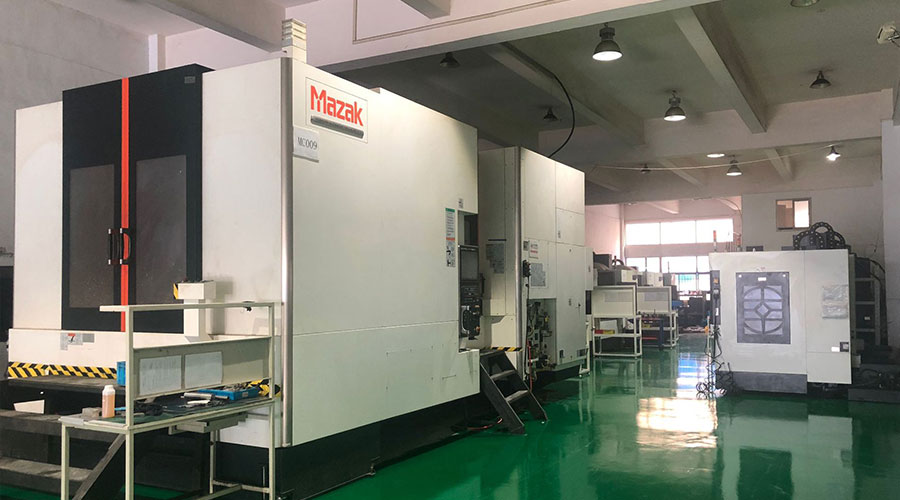 PTJ® provides a full range of Custom Precision cnc machining china services.ISO 9001:2015 &AS-9100 certified. 3, 4 and 5-axis rapid precision CNC machining services including milling, sheet metal to customer specifications,Capable of metal & plastic machined parts with +/-0.005 mm tolerance.Secondary services include CNC and conventional grinding, laser cutting,drilling,die casting,sheet metal and stamping.Providing prototypes, full production runs, technical support and full inspection.Serves the automotive, aerospace, mold&fixture,led lighting,medical,bicycle, and consumer electronics industries. On-time delivery.Tell us a little about your project’s budget and expected delivery time. We will strategize with you to provide the most cost-effective services to help you reach your target,Welcome to Contact us ( [email protected] ) directly for your new project.
PTJ® provides a full range of Custom Precision cnc machining china services.ISO 9001:2015 &AS-9100 certified. 3, 4 and 5-axis rapid precision CNC machining services including milling, sheet metal to customer specifications,Capable of metal & plastic machined parts with +/-0.005 mm tolerance.Secondary services include CNC and conventional grinding, laser cutting,drilling,die casting,sheet metal and stamping.Providing prototypes, full production runs, technical support and full inspection.Serves the automotive, aerospace, mold&fixture,led lighting,medical,bicycle, and consumer electronics industries. On-time delivery.Tell us a little about your project’s budget and expected delivery time. We will strategize with you to provide the most cost-effective services to help you reach your target,Welcome to Contact us ( [email protected] ) directly for your new project.
Link to this article:Analysis of common quality problems of steel and their causes
Reprint Statement: If there are no special instructions, all articles on this site are original. Please indicate the source for reprinting:Tungusten,Thanks!^^

